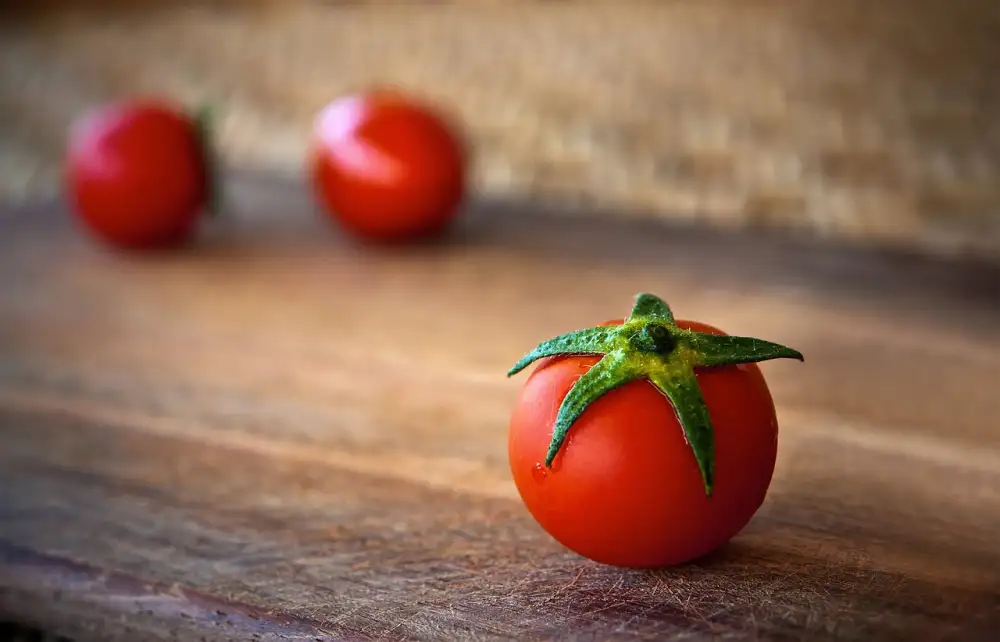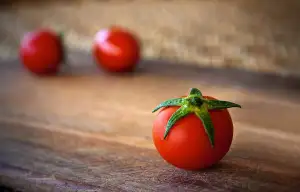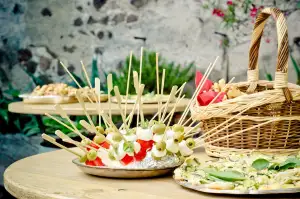Master the Art of Passata: A Delectable Tomato Puree Recipe for Food Enthusiasts

Passata, a traditional Italian tomato puree, is a versatile ingredient that adds depth and richness to countless dishes. Made from ripe tomatoes, passata is known for its smooth texture and vibrant flavor. It serves as a base for pasta sauces, soups, stews, and even pizza toppings. This beloved pantry staple has been cherished by food enthusiasts around the world for generations. Whether you're a seasoned chef or a novice in the kitchen, mastering the art of passata will elevate your culinary creations to new heights of deliciousness.
Benefits and Uses of Passata
Passata, a rich and flavorful tomato puree, offers numerous benefits and endless possibilities in the culinary world. Its smooth texture and vibrant taste make it a versatile ingredient that can elevate any dish. Whether you're a seasoned chef or an aspiring home cook, incorporating passata into your recipes will surely enhance the flavors of your creations. From pasta sauces to soups, stews, and even pizzas, passata adds depth and richness to any dish. Its concentrated flavor makes it an excellent base for homemade marinara sauce or tomato soup. Additionally, passata can be used as a topping for bruschetta or as a dip for breadsticks. The uses of passata are limited only by your imagination. So why not explore this delectable tomato puree and unlock its full potential in your kitchen?
Step-by-Step Passata Recipe
1. Gather the Ingredients: Start by collecting fresh, ripe tomatoes, preferably Roma or San Marzano varieties. You will also need a large pot, a blender or food processor, a fine-mesh strainer or cheesecloth, and glass bottles for storing the passata.
2. Prepare the Tomatoes: Wash the tomatoes thoroughly and remove any stems or blemishes. Cut them into quarters and remove the seeds if desired. This step is optional but can help achieve a smoother consistency.
3. Cook and Blend the Tomatoes: Place the tomatoes in a large pot and simmer over medium heat until they become soft and start to release their juices. Stir occasionally to prevent sticking. Once cooked, allow them to cool slightly before transferring to a blender or food processor. Blend until smooth.
4. Strain and Bottle the Passata: Set up a fine-mesh strainer or line a colander with cheesecloth over another pot or bowl to catch the liquid. Pour the blended tomato mixture into the strainer and gently press down with a spoon to extract as much liquid as possible. Discard any solids left behind. Transfer the strained passata into clean glass bottles while it's still hot, leaving some headspace at the top for expansion during freezing or canning.
Now you have your homemade passata ready to be used in various recipes!
Gather the Ingredients
To make a delicious passata, you will need the following ingredients:
- Fresh tomatoes: Choose ripe, juicy tomatoes for the best flavor. You can use any variety of tomatoes, but plum or Roma tomatoes are commonly used for passata due to their rich taste and low water content.
- Salt: Add a pinch of salt to enhance the natural sweetness of the tomatoes.
- Fresh basil leaves: Basil adds a fragrant and herbaceous note to the passata. You can adjust the amount according to your preference.
- Garlic cloves: Garlic adds depth and complexity to the flavor profile of passata. Use one or two cloves depending on your taste.
- Olive oil: A drizzle of olive oil gives a smooth texture and richness to the passata.
Make sure all your ingredients are fresh and high quality for the best results.
Prepare the Tomatoes
To prepare the tomatoes for passata, start by selecting ripe and juicy tomatoes. Roma or San Marzano tomatoes are commonly used for their rich flavor and low water content. Wash the tomatoes thoroughly under running water to remove any dirt or debris. Next, remove the stems and cut a small "X" on the bottom of each tomato. This will help in easy peeling later on. Fill a large pot with water and bring it to a boil. Carefully drop the tomatoes into the boiling water and let them cook for about 1-2 minutes or until you notice the skin starting to peel away. Using a slotted spoon, transfer the tomatoes to a bowl of ice water to cool down quickly. Once they are cool enough to handle, gently peel off the skin starting from where you made the "X" mark earlier. The skin should come off easily. Repeat this process with all the tomatoes until they are all peeled and ready for cooking.
Cook and Blend the Tomatoes
To cook and blend the tomatoes for your passata, start by heating a large pot over medium heat. Add the prepared tomatoes to the pot and let them simmer for about 20 minutes, or until they become soft and start to break down.
Once the tomatoes are cooked, remove the pot from heat and allow them to cool slightly. Using an immersion blender or a regular blender, carefully puree the tomatoes until smooth and creamy. Be cautious when blending hot liquids to avoid any accidents.
If you prefer a chunkier texture, you can pulse the blender a few times instead of blending continuously. This will give your passata a more rustic feel.
After blending, return the tomato puree to the pot and bring it back to a gentle simmer. Let it cook for another 10-15 minutes to further thicken the passata and enhance its flavors.
Remember to taste and adjust the seasoning if needed. You can add salt, pepper, herbs like basil or oregano, or even a pinch of sugar to balance out any acidity in the tomatoes.
Once you're satisfied with the taste and consistency of your passata, it's ready to be strained and bottled.
Strain and Bottle the Passata
3.4 Strain and Bottle the Passata
Once the tomatoes have cooked down and blended into a smooth puree, it's time to strain and bottle the passata. This step is crucial for achieving a silky texture and removing any seeds or skin that may remain.
To strain the passata, set up a fine-mesh sieve or cheesecloth-lined colander over a large bowl or pot. Carefully pour the tomato puree into the sieve, allowing it to strain through while catching any solids.
Use a spoon or spatula to gently press down on the puree, helping it pass through the sieve. This will extract as much liquid as possible while leaving behind any unwanted bits.
After straining, you can transfer the passata into sterilized glass bottles or jars. Make sure to leave some headspace at the top to allow for expansion during freezing or canning.
If you plan on storing your passata in the refrigerator, use smaller containers that can be consumed within a week or two. For longer-term storage, consider using freezer-safe containers or canning jars for preserving your passata.
Remember to label each bottle with the date of preparation for easy reference later on.
By straining and bottling your homemade passata, you'll be able to conveniently access its vibrant flavor whenever you desire. Whether used as a base for pasta sauces, soups, stews, or even as a topping for pizzas and bruschetta, having homemade passata on hand will elevate your culinary creations to new heights.
Tips and Variations for Making Passata
1. Choose the right tomatoes: Opt for ripe, juicy tomatoes with a rich flavor. San Marzano or Roma tomatoes are commonly used for passata due to their low water content and intense taste.
2. Remove the seeds: To achieve a smoother texture, remove the seeds before cooking the tomatoes. Cut the tomatoes in half and gently squeeze out the seeds using your fingers or a spoon.
3. Add herbs and spices: Enhance the flavor of your passata by adding herbs and spices like basil, oregano, garlic, or onion powder. Experiment with different combinations to create your own signature passata recipe.
4. Adjust consistency: If you prefer a thicker passata, cook the tomatoes for longer to reduce the liquid content. For a thinner consistency, blend the cooked tomatoes without straining them.
5. Customize flavors: Get creative with your passata by adding roasted red peppers, chili flakes, or even a splash of balsamic vinegar for an extra kick of flavor. Don't be afraid to experiment and make it uniquely yours!
6. Preserve freshness: To extend the shelf life of your homemade passata, consider adding a tablespoon of lemon juice or citric acid per liter of sauce before bottling it. This will help prevent spoilage and maintain its vibrant color.
Remember that making passata is an art form that allows you to showcase your culinary skills while preserving seasonal flavors all year round. Enjoy exploring different techniques and flavors to create a truly exceptional tomato puree that will elevate any dish!
Storage and Shelf Life of Passata
Once you have made your delicious passata, it is important to store it properly to ensure its freshness and longevity. Passata can be stored in airtight glass jars or bottles in a cool, dark place such as a pantry or cellar. It is essential to make sure the containers are sterilized before filling them with passata to prevent any bacterial growth.
When storing passata, make sure to leave some headspace at the top of the jar or bottle to allow for expansion during freezing or canning. If you choose to freeze your passata, transfer it into freezer-safe containers, leaving about an inch of space at the top for expansion.
Properly stored passata can last up to a year if kept in a cool and dark environment. However, once opened, it should be refrigerated and consumed within 3-4 days. Always remember to check for any signs of spoilage before using any stored passata.
By following these storage guidelines, you can enjoy the versatility of passata throughout the year and add its rich flavor to your favorite dishes whenever you desire.
In conclusion, mastering the art of passata opens up a world of culinary possibilities. Its rich and vibrant flavor can enhance a wide range of dishes, from pasta sauces and soups to stews and pizzas. The smooth texture and concentrated taste of passata make it a versatile ingredient that adds depth and complexity to any recipe.
Whether you choose to make your own passata or purchase it from a store, this tomato puree is sure to elevate your cooking. Its convenience and long shelf life make it a pantry staple that can be enjoyed throughout the year.
So go ahead, experiment with different herbs and spices, add some garlic or chili for an extra kick, or use it as a base for your favorite Italian recipes. The possibilities are endless when it comes to incorporating passata into your culinary creations.
Discover the magic of passata and let its deliciousness take your dishes to new heights. Happy cooking!
Published: 06. 12. 2023
Category: Food



